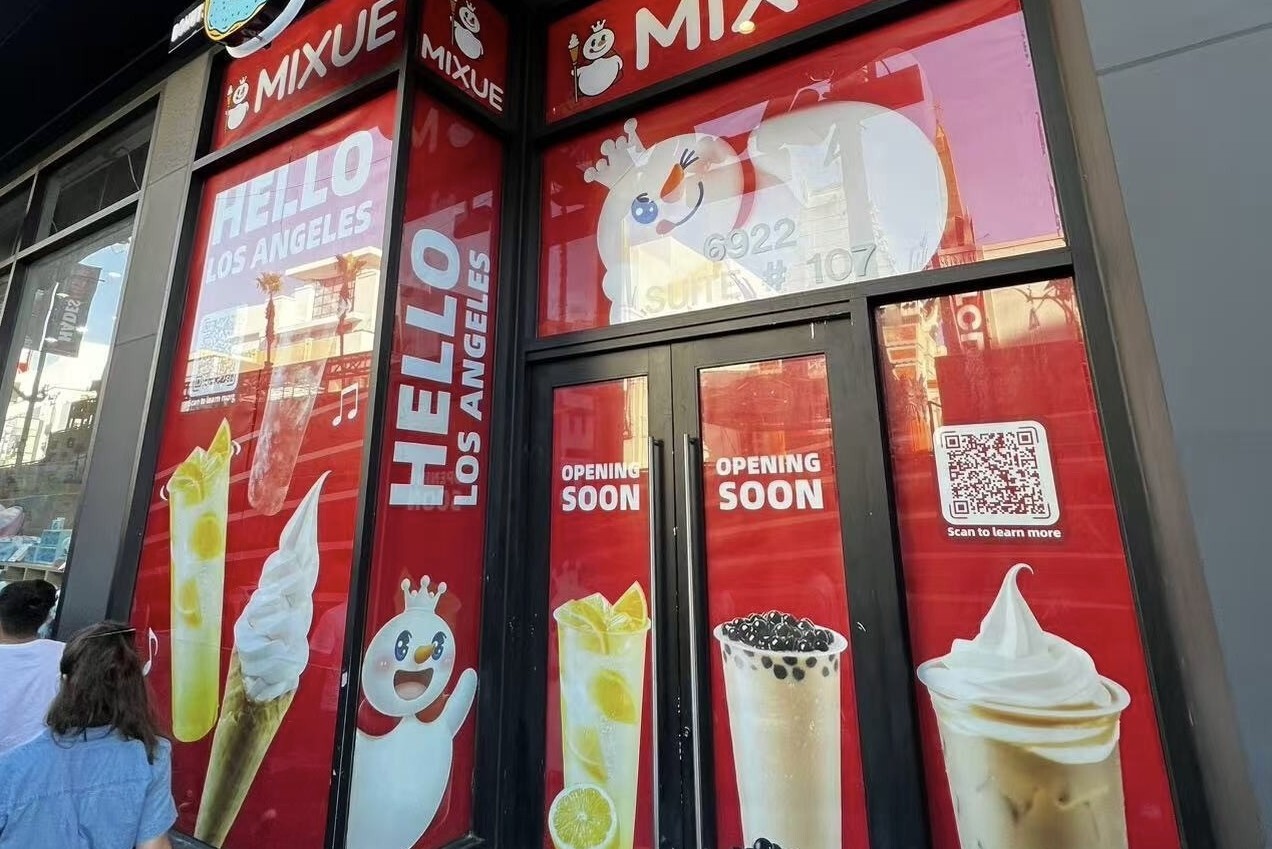A fried chicken chain that's considered a cultural institution in the Philippines is tapping franchisees to help it take on the big birds among U.S. quick-service eateries.
Jollibee is preparing to open its first franchised restaurant on the West Coast next year near Sacramento, a milestone in an ambitious plan to become one of the world’s top five restaurant operators.
The company, with a menu including burgers, spaghetti and pies, counts 107 stores in the U.S. and Canada that were all owned and operated by Jollibee until September, when the chain opened its first franchised U.S. location in New York City. Now, it wants to reach several hundred U.S. locations by 2028 by prioritizing franchise growth. It's focusing on California, Texas, Florida and the Northeast, while also considering Chicago and the Pacific Northwest.
But no market is off limits, according to Peter Wright, the firm's new vice president of franchising, who joined Jollibee last year to help launch the program.
“This is the best opportunity nobody’s ever heard of,” Wright told CoStar News.
Nationwide, retail demand is rebounding after a sluggish first half of the year, according to CoStar research.
Even so, Jollibee will need to compete with other quick-service retailers, many far larger, for the best-located sites and labor. That competition is especially true for chicken chains, with Chick-fil-A and Raising Cane's posting the highest annual amount of sales generated per restaurant among U.S. quick-service restaurants.
There are also economic headwinds that can now be seen hitting fast-casual restaurants. But quick-service is better positioned, with that U.S. franchise sector projected to grow 2.5% this year, according to industry data.
Global roots
Jollibee expects to open its first store under its West Coast franchisee in February, in Roseville, near Sacramento. Wright declined to offer location specifics.
The planned restaurant follows the September opening of the franchised store in New York City's Queens Center Mall.
Jollibee’s founder, Tony Tan Caktiong, started selling ice cream in Manila before pivoting to hot meals in the late 1970s, a decision that gave birth to the fried chicken brand known for its sweet-style spaghetti and signature “Chickenjoy" fried chicken dish.
The company says it is the top-selling fast-food chain in the Philippines, outperforming global giants like McDonald’s and KFC in both store count and market share. It holds a larger market share than all foreign fast-food brands combined in the country with more than 1,500 stores. Jollibee has about 1,800 stores worldwide.
The brand entered the U.S. in Daly City, California, 25 years ago, building a strong base among Filipinos before broadening its customer base. “As we’ve opened more stores, the percentage of our customers coming from the general population continues to grow,” Wright said.
Jollibee's existing U.S. stores saw the number of visits climb 22% in June 2025 when compared to September 2024. Visits grew 4% for the total quick-service restaurant industry during that time, according to traffic tracking firm Placer.ai.
Real estate requirements
The restaurant chain's parent company, Jollibee Group, operates a mix of homegrown and international brands across different food segments, including Chowking, Red Ribbon and Smashburger. It also runs franchised outlets for Burger King, Panda Express and others in the Philippines, while holding ownership stakes in brands such as The Coffee Bean and Tea Leaf, Highlands Coffee and Milkshake.
Jollibee now operates in markets ranging from a freestanding unit in West Covina in California to a high street storefront in Times Square.
The company favors freestanding pads with drive-thrus, followed by inline locations and food court units. Restaurants are typically between 2,500 and 3,000 square feet.
The company said ideal sites offer strong visibility with at least 25,000 average daily visitors, and proximity to major retail or institutional anchors.

The brand is also open to converting second-generation restaurant spaces, particularly as other chains reevaluate their portfolios.
“A couple of operators have mentioned interest in converting their existing locations to Jollibee,” Wright said. “These are typically freestanding drive-thrus in great locations that just need a winning concept.”
Challenges and competition
Like other fast-growing quick-service brands, Jollibee faces stiff competition for prime sites and experienced franchise partners.
Jollibee ranks 143rd in Technomic’s 2025 Top 500 Chain Restaurant Report, with $333 million in U.S. systemwide sales across 75 units in 2024. That places it behind major chicken chains like Chick-fil-A, Popeyes, Raising Cane’s, KFC and Wingstop. But Jollibee is on the climb, with same-store sales up 11% at the company's North American stores in the first quarter of 2025.
“Finding great sites has never been more difficult,” Wright said. “But that’s always been true in the U.S. restaurant business. The ones who succeed are creative and connected to their markets.”
Despite the crowded fried chicken sector, Wright believes Jollibee’s combination of global experience, strong sales and crossover appeal gives it an edge.
“People say the chicken market is saturated — but here we are, opening new locations and achieving some of the highest average unit volumes in the category,” he said, noting the company posts such volumes of $4.6 million per unit.
Jollibee is seeing interest from experienced franchise operators across Southern California, according to Wright: "This is just the beginning."


